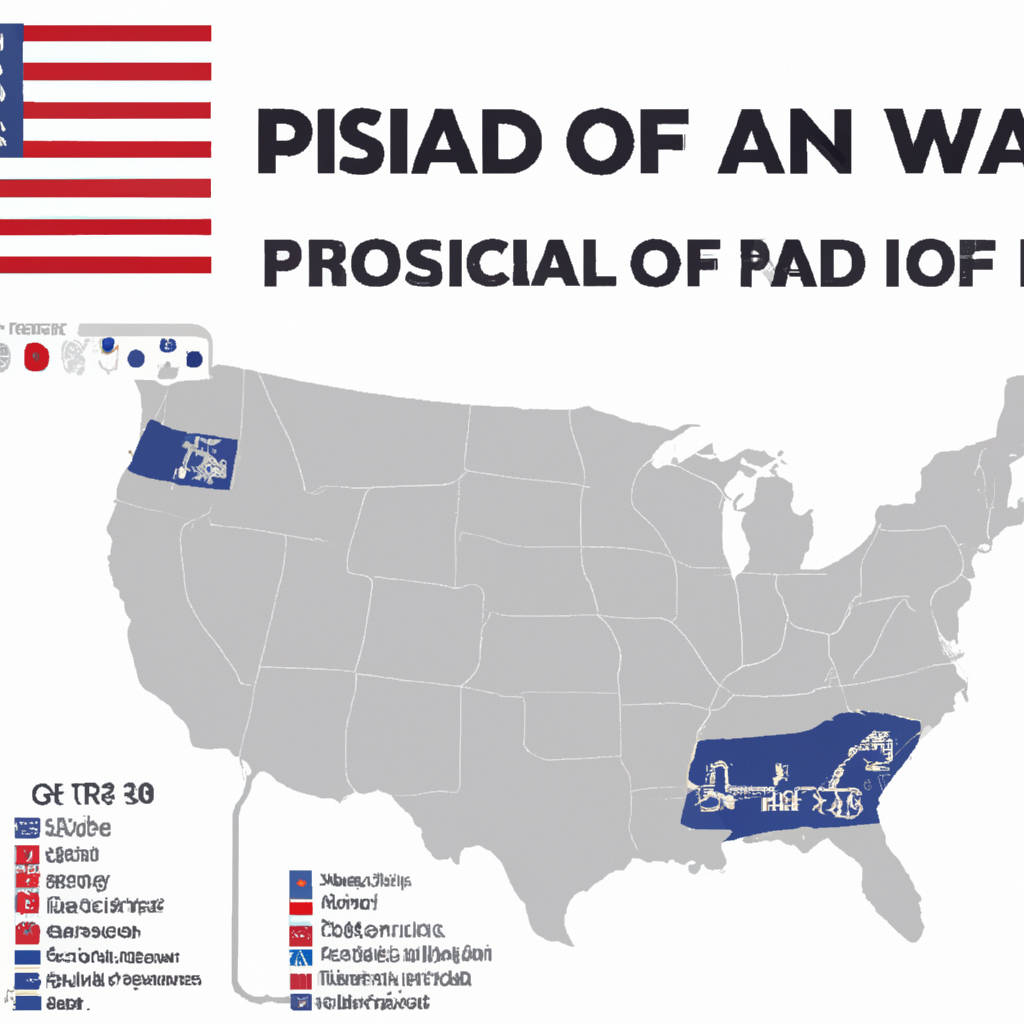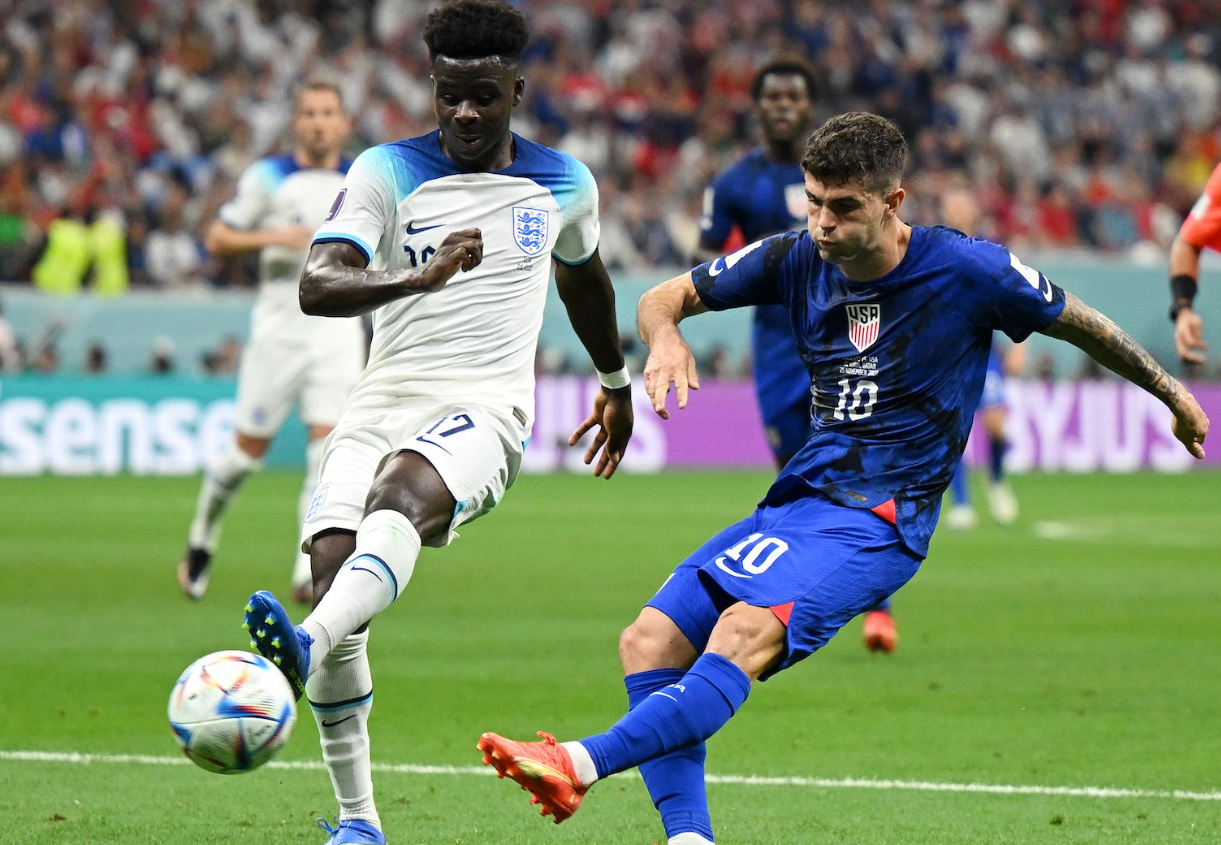The United States Men’s National Team (USMNT) has had a mixed bag of results throughout their participation in the FIFA World Cup. Since their debut in 1930, the USMNT has made a total of 10 appearances in the prestigious tournament.
The team’s best performance came in 1930, where they reached the semi-finals in their inaugural campaign. However, since then, their journey in subsequent World Cups has been a rollercoaster ride. The USMNT has managed to advance to the knockout stages on several occasions, including a memorable run to the quarter-finals in 2002.
Over the years, the USMNT has faced tough opponents and has had to overcome hurdles to qualify for the World Cup. Despite facing stiff competition in the qualifying rounds, the team has shown resilience and determination. Notable moments include their qualification for the 1990 World Cup, ending a 40-year drought, and their dramatic last-minute goal against Algeria in 2010, securing their place in the knockout stages.
The USMNT has also produced some remarkable individual performances in World Cup history. Players like Clint Dempsey, Landon Donovan, and Tim Howard have left their mark on the tournament, showcasing their skills and contributing to the team’s successes.
While the USMNT has had its fair share of disappointments, such as failing to qualify for the 2018 World Cup, they have consistently competed with passion and pride. The team’s participation in the FIFA World Cup has not only provided thrilling moments for fans but has also helped raise the profile of soccer in the United States.
Looking ahead, the USMNT continues to strive for success on the world stage. With a new generation of talented players emerging, there is optimism for future World Cup campaigns, and fans eagerly await the team’s next chapter in this prestigious tournament.

History of USMNT in FIFA World Cup
The United States Men’s National Team, commonly known as USMNT, has had a storied history in the FIFA World Cup. From their humble beginnings to their impressive performances, the USMNT has left an indelible mark on the tournament.
The USMNT made their first appearance in the FIFA World Cup in 1930. Despite being considered underdogs, they managed to make it to the semi-finals, a remarkable achievement for a team with limited international experience. Led by coach Robert Millar, the USMNT showcased their determination and skill, surprising many football enthusiasts around the world.
In subsequent World Cups, the USMNT struggled to replicate their early success. It wasn’t until 1950 that they made another significant impact on the tournament. In a stunning upset, they defeated England 1-0, widely regarded as one of the biggest upsets in World Cup history. This victory catapulted the USMNT into the global spotlight, earning them respect and admiration from football fans worldwide.
Throughout the years, the USMNT experienced both highs and lows in the World Cup. They failed to qualify for the tournament on several occasions, but also had moments of triumph. One such moment came in 1994, when the United States hosted the World Cup. The USMNT reached the Round of 16, displaying their resilience and determination in front of their home crowd.
The 2002 World Cup in South Korea and Japan marked a turning point for the USMNT. Under the guidance of coach Bruce Arena, they advanced to the quarter-finals, the furthest they had progressed since their incredible run in 1930. The team showcased their potential and talent, solidifying their place as a rising force in international football.
In recent years, the USMNT has faced challenges in the World Cup. They failed to qualify for the 2018 tournament, a disappointment for fans and players alike. However, this setback has served as a catalyst for change and rejuvenation within the team. With a new generation of talented players emerging, the USMNT is determined to make a strong comeback in future World Cup editions.
The USMNT’s journey in the World Cup has not only been about their on-field performances but also about their influence off the pitch. The team has played a significant role in popularizing soccer in the United States, steadily growing the sport’s fan base. Their participation in the World Cup has inspired countless young athletes to pursue their dreams on the football field and has contributed to the overall development of soccer in the country.
Looking ahead, the USMNT is poised to make a mark in future World Cups. With a renewed focus on youth development and a commitment to excellence, they aim to compete against the world’s best teams on the grandest stage. The USMNT’s rich history in the World Cup serves as a testament to their resilience, passion, and determination to succeed at the highest level.
In conclusion, the USMNT’s journey in the FIFA World Cup has been a rollercoaster of emotions, filled with both triumphs and disappointments. From their surprising semi-final appearance in 1930 to their monumental victories over strong opponents, the USMNT has left an indelible mark on the tournament’s history. As they continue to evolve and grow, the USMNT is determined to make their presence felt on the global football stage.
Discussion of notable matches played by the USMNT in FIFA World Cup history
The United States Men’s National Team (USMNT) has had its fair share of memorable moments in the FIFA World Cup, leaving an indelible mark on the tournament’s history. From stunning upsets to nail-biting finishes, the USMNT has given fans countless reasons to celebrate. Let’s delve into some of the most notable matches played by the USMNT in World Cup history.
One of the most iconic matches involving the USMNT took place in the 1950 World Cup in Brazil. Facing the mighty England, the USMNT entered the match as massive underdogs. In a shocking turn of events, the USMNT emerged victorious with a 1-0 triumph. The goal, scored by Joe Gaetjens, stunned the footballing world and remains one of the greatest upsets in World Cup history. This match not only put the USMNT on the map but also showcased their potential as a competitive force on the international stage.
Fast forward to the 1994 World Cup, which was hosted by the United States. In a thrilling encounter against Colombia, the USMNT faced a team burdened by excessive pressure. The match saw an unfortunate own goal by Colombian defender Andrés Escobar, which proved to be the decisive moment. The USMNT secured a 2-1 victory, providing a glimmer of hope for American fans and advancing to the knockout stage. This match served as a turning point for American soccer, as it highlighted the team’s ability to compete against formidable opponents.
Continuing the trend of dramatic matches, the USMNT faced Portugal in the 2002 World Cup held in South Korea and Japan. With Portugal boasting a star-studded squad including Luis Figo and Rui Costa, the USMNT faced an uphill battle. Trailing 1-0, the USMNT’s Brian McBride equalized with a powerful header, leaving fans in awe. However, Portugal responded swiftly with a goal of their own. In a remarkable turn of events, the USMNT’s Landon Donovan scored a last-minute goal, securing a 3-2 victory. This thrilling encounter marked the USMNT’s first-ever win against a European powerhouse in a World Cup match.
Another unforgettable match took place in the 2010 World Cup held in South Africa. Needing a victory to advance to the knockout stage, the USMNT faced Algeria in a must-win encounter. As the match entered stoppage time, the score remained deadlocked at 0-0. In a moment of sheer brilliance, Landon Donovan scored the winning goal, propelling the USMNT to a 1-0 victory and securing their place in the round of 16. This dramatic late goal sparked scenes of jubilation across the nation and showcased the USMNT’s resilience and ability to perform under pressure.
Lastly, the USMNT’s clash against Belgium in the 2014 World Cup captivated fans worldwide. Despite an exceptional performance by American goalkeeper Tim Howard, the USMNT found themselves trailing 0-2 in extra time. However, their fighting spirit shone through as Julian Green scored a remarkable goal, reigniting hope. Despite an onslaught of Belgian attacks, the USMNT fell short, losing 2-1. Although they were eliminated, this match demonstrated the USMNT’s determination and refusal to back down against formidable opponents.
The USMNT’s journey in the FIFA World Cup has been filled with remarkable matches that have left an indelible mark on the tournament’s history. From stunning upsets to thrilling comebacks, these matches have showcased the team’s potential and resilience. As the USMNT continues to evolve, fans eagerly anticipate the next chapter in their World Cup journey, hoping for more unforgettable moments and triumphs on the grandest stage of them all.

Examination of the tactical approaches employed by the USMNT in FIFA World Cup matches
The tactical approaches employed by the United States Men’s National Team (USMNT) in FIFA World Cup matches have evolved significantly over the years. These strategies have played a crucial role in shaping the team’s performance and determining their success on the global stage.
One notable tactical approach utilized by the USMNT is a focus on disciplined defending. Historically, the team has often faced opponents with superior technical abilities, prompting them to adopt a more defensive mindset. This approach entails organizing the team into a compact defensive structure, with an emphasis on positional discipline and teamwork. By denying space and limiting the opposition’s attacking options, the USMNT aims to frustrate their opponents and prevent them from creating clear goal-scoring opportunities.
Moreover, the USMNT has frequently relied on counter-attacking football as a means to exploit the opposition’s defensive vulnerabilities. This tactical approach involves quickly transitioning from defense to attack, utilizing the pace and athleticism of the players. By releasing fast and decisive counter-attacks, the USMNT aims to catch the opposition off guard and create goal-scoring opportunities. This strategy has proven particularly effective against teams that commit large numbers of players forward, leaving gaps in their defense.
In recent years, the USMNT has also embraced a possession-based game, focusing on ball retention and patient buildup play. This tactical approach aims to control the rhythm of the game, frustrating the opposition by denying them possession and wearing them down physically. By dominating possession, the USMNT can dictate the tempo and create scoring opportunities through well-structured passing movements and positional play. This approach requires technical proficiency, as players must be comfortable in possession and have the ability to make accurate passes under pressure.
Additionally, the USMNT has incorporated tactical flexibility into their game plan, allowing them to adapt to different opponents and match situations. This adaptability is particularly evident in the team’s use of formations. The USMNT has experimented with various formations, including the traditional 4-4-2, a more defensive 5-3-2, and a more attacking 4-3-3. By altering formations based on the strengths and weaknesses of both their own team and the opposition, the USMNT can maximize their chances of success.
Another key tactical aspect employed by the USMNT is set-piece strategies. Recognizing the significance of dead-ball situations, the team has invested considerable effort in training and perfecting set-piece routines. These routines include both offensive and defensive strategies. Offensively, the USMNT aims to create confusion and exploit defensive weaknesses, often utilizing clever movement and decoy runs to create goal-scoring opportunities from corners or free-kicks. Defensively, the team focuses on maintaining organization and marking tightly, reducing the likelihood of conceding from set-piece situations.
In conclusion, the USMNT has evolved its tactical approaches in FIFA World Cup matches to adapt to the challenges posed by different opponents. The team has utilized disciplined defending, counter-attacking football, possession-based play, tactical flexibility, and set-piece strategies to maximize their chances of success. These tactical approaches have been crucial in shaping the team’s performances and have allowed the USMNT to compete at the highest level on the global stage.
Outlook for the USMNT’s future in FIFA World Cup competitions
The United States Men’s National Team (USMNT) has had its fair share of ups and downs in FIFA World Cup competitions. While the team has shown promising glimpses of talent and potential, it has also faced challenges and disappointments along the way. Looking ahead, the outlook for the USMNT’s future in the World Cup is one filled with hope, determination, and a renewed focus on development.
In recent years, the USMNT has undergone a significant transformation. With a renewed emphasis on youth development and player recruitment, the team has started to build a solid foundation for future success. The establishment of academies and development programs across the country has allowed talented young players to receive the necessary training and guidance to reach their full potential. This investment in grassroots football is likely to yield positive results in the coming years.
Additionally, the growth of Major League Soccer (MLS) has played a crucial role in the development of American players. The league’s expansion and increased competitiveness have attracted talented players from around the world, exposing American players to a higher level of play. This exposure to top-level competition will undoubtedly benefit the USMNT in future World Cup campaigns.
Furthermore, the appointment of Gregg Berhalter as head coach in 2018 has brought a fresh perspective and tactical approach to the team. Berhalter’s emphasis on possession-based football and player development has been well-received by both fans and players alike. Under his guidance, the USMNT has shown signs of progress and cohesion, evident in their strong performances in recent friendlies and international tournaments.
The USMNT’s participation in the 2022 World Cup in Qatar will be a crucial milestone in determining their future trajectory. While qualifying for the tournament is not guaranteed, the team’s recent performances and the talent at their disposal provide reasons to be optimistic. The likes of Christian Pulisic, Weston McKennie, and Tyler Adams have already established themselves as key players for both their club teams and the national team. Their individual talents, combined with a collective hunger for success, bode well for the USMNT’s chances in the upcoming World Cup.
It is also worth noting the increasing diversity within the USMNT squad. The team’s ability to tap into the rich pool of talent from various ethnic backgrounds and cultural heritages has added a new dimension to their gameplay. The infusion of different playing styles and techniques has made the USMNT a more versatile and unpredictable team. This diversity will undoubtedly play a significant role in their future success in World Cup competitions.
However, challenges still lie ahead for the USMNT. The team will need to continue nurturing young talent and providing them with opportunities to develop and excel. Additionally, they must focus on building a cohesive and well-drilled unit that can compete against the world’s top footballing nations. This will require a strong emphasis on team chemistry, tactical awareness, and mental fortitude.
In conclusion, the outlook for the USMNT’s future in FIFA World Cup competitions is promising. The investments in youth development, the growth of MLS, the appointment of a forward-thinking coach, and the emergence of talented young players all point towards a brighter future for American soccer. While challenges remain, the USMNT’s potential to become a formidable force in the World Cup is evident. With continued dedication and the right development strategies in place, the USMNT has the opportunity to make a significant impact on the global stage of football.

Summary of the USMNT’s journey in FIFA World Cup history
The United States Men’s National Team (USMNT) has had a rich and storied journey in the FIFA World Cup, representing the passion and dedication of American soccer enthusiasts. From humble beginnings to moments of triumph, the USMNT has left an indelible mark on the world’s most prestigious football tournament.
The USMNT’s World Cup journey began in 1930, when they participated in the inaugural edition of the tournament held in Uruguay. Despite facing formidable opponents, the team showcased their determination and resilience, reaching the semifinals in their first-ever appearance. This achievement put American soccer on the global map and set the stage for future successes.
However, the road to consistent World Cup participation was not always smooth. The USMNT endured a long absence from the tournament, missing out for several decades after their initial success. It was not until 1990 that the team returned to the World Cup stage, led by the charismatic and influential coach, Bora Milutinović.
Under Milutinović’s guidance, the USMNT began to regain its footing on the international stage. Qualifying for the tournament in Italy, they faced strong opponents in their group, including Czechoslovakia, Italy, and Austria. Although they didn’t advance past the group stage, their performances displayed a growing determination and a glimpse of the potential within American soccer.
Four years later, in the 1994 World Cup hosted by the United States, the USMNT had a chance to showcase their progress on home soil. Led by legendary players like Alexi Lalas and Tab Ramos, the team electrified the nation, advancing to the Round of 16. Their thrilling victory over Colombia in the group stage is still remembered as a watershed moment for American soccer, solidifying their place as a rising force in the global game.
The USMNT’s journey reached new heights in the 2002 World Cup held in South Korea and Japan. Coached by Bruce Arena, the team defied expectations by reaching the quarterfinals, their best performance since 1930. They displayed remarkable resilience, defeating Portugal, tying South Korea, and defeating rivals Mexico in a thrilling Round of 16 match. The team’s run instilled a sense of pride and hope in American soccer fans, further fueling the growth and popularity of the sport across the nation.
In subsequent World Cups, the USMNT continued to make appearances, with varying degrees of success. They advanced to the Round of 16 in 2010, thanks to iconic moments like Landon Donovan’s last-minute goal against Algeria. However, they faced disappointment in 2014, failing to progress beyond the group stage despite valiant efforts against strong opponents.
The most recent edition of the World Cup in 2018 saw the USMNT’s absence, a setback that highlighted the highly competitive nature of international soccer qualifications. Nonetheless, the team’s absence served as a wake-up call, prompting a reevaluation of U.S. soccer development and inspiring efforts to strengthen the sport at all levels.
Looking ahead, the USMNT’s journey in the World Cup continues to hold immense promise. With a new generation of talented players emerging, such as Christian Pulisic and Weston McKennie, the team possesses the potential to make a significant impact on future tournaments. The USMNT’s journey in FIFA World Cup history is an embodiment of the American spirit, resilience, and the passion for soccer, showcasing the nation’s ability to compete on the global stage.











